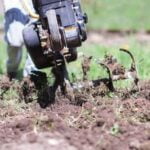Flowers play a crucial role in vegetable gardens, offering more than just aesthetic appeal. They can attract pollinators, repel pests, enrich soil, and even provide edible delights. In this article, we will delve into the world of beneficial flowers for vegetable gardens, exploring their various functions and benefits to enhance your gardening experience.
One of the key questions many gardeners ask is: what flowers are beneficial to vegetable gardens? The answer lies in understanding how flowers can contribute to the health and productivity of your vegetable plants. By strategically selecting and planting certain flowers in your garden, you can create a harmonious ecosystem that supports both flora and fauna.
From attracting pollinators like bees and butterflies to repelling harmful pests and improving soil quality, flowers bring a multitude of benefits to vegetable gardens. By incorporating them into your garden design, you not only add beauty but also boost the overall health and yield of your crops. Join us as we explore the fascinating world of flowers in vegetable gardening and discover how these blooms can make a difference in your garden.
Pollinator-Attracting Flowers
One of the key benefits of integrating pollinator-attracting flowers into vegetable gardens is the promotion of biodiversity. By attracting a diverse array of pollinators, these flowers contribute to a healthier ecosystem within your garden. Additionally, the presence of pollinators helps ensure successful fruit set in many vegetable plants that rely on insect pollination. This symbiotic relationship between flowers and pollinators is essential for a thriving vegetable garden.
Furthermore, by planting pollinator-attracting flowers alongside your vegetables, you are creating a more balanced and sustainable environment. The nectar and pollen provided by these flowers not only support the local bee population but also contribute to overall garden health. To maximize the benefits of these flowers in your vegetable garden, consider planting them strategically throughout your garden beds or in borders around the perimeter to attract and retain valuable pollinators.
| Advantages | Examples |
|---|---|
| Increased fruit production | Lavender, Sunflowers |
| Promotion of biodiversity | Zinnias, Bee Balm |
| Sustainable environment | Strategic planting methods for success |
Pest-Repelling Flowers
Flowers play a vital role in vegetable gardens not only for their beauty but also for their functional benefits. One of the significant advantages of incorporating flowers into vegetable gardens is their ability to repel pests and protect vegetable plants. By choosing the right pest-repelling flowers, gardeners can naturally deter harmful insects and promote a healthier garden ecosystem without the need for chemical pesticides.
Marigolds: Nature’s Pest Control
Marigolds are a popular choice for gardeners looking to fend off pests in their vegetable gardens. These vibrant flowers contain natural compounds that deter harmful nematodes, aphids, and other common garden pests. Planting marigolds around your tomato plants, for example, can help protect them from insect damage and improve overall plant growth. Additionally, marigolds attract beneficial insects like ladybugs and hoverflies, which feed on harmful pests, creating a more balanced and sustainable garden environment.
Lavender: Aromatic Pest Repellent
Lavender not only adds beauty and a lovely fragrance to the garden but also serves as an effective pest repellent. The strong scent of lavender is known to repel mosquitoes, moths, fleas, and other unwanted insects that may harm vegetable plants. By planting lavender near your cabbage or carrot patch, you can help keep destructive pests at bay naturally. Furthermore, lavender attracts pollinators like bees and butterflies, promoting better pollination in the vegetable garden.
Soil-Enriching Flowers
When it comes to cultivating a thriving vegetable garden, the importance of soil health cannot be overstated. One way to enhance the fertility and quality of the soil in your garden is by incorporating soil-enriching flowers into your planting scheme. These flowers not only add beauty to your garden landscape but also play a crucial role in providing essential nutrients and beneficial microorganisms to the soil.
Adding Nitrogen With Leguminous Flowers
Leguminous flowers such as clover, peas, and beans are known for their ability to fix nitrogen in the soil. These plants have symbiotic relationships with nitrogen-fixing bacteria that convert atmospheric nitrogen into a form that is readily available for other plants to absorb. By planting leguminous flowers in between rows of vegetables or as cover crops, you can increase nitrogen levels in the soil naturally, reducing the need for synthetic fertilizers.
Improving Soil Structure With Sunflowers
Sunflowers are not just a stunning ornamental addition to gardens; they also offer practical benefits for improving soil structure. Sunflower roots have deep taproots that can break up compacted soil layers, allowing better air and water circulation. As sunflowers grow, they also draw up nutrients from deeper layers of the soil, which they release when their leaves decompose. This process helps improve overall soil tilth and nutrient availability for neighboring vegetable plants.
Incorporating soil-enriching flowers like marigolds, chamomile, and calendula can also promote healthy ecosystems underground by attracting beneficial insects that aid in pest control and pollination. By diversifying your garden with these beneficial flowers, you create a harmonious environment where vegetables can thrive while nurturing the health of the soil for long-term sustainability.
Companion Planting With Flowers
In addition to attracting pollinators, companion planting with certain flowers can also help repel pests that may damage vegetable plants. For example, planting nasturtiums near cucumbers can deter cucumber beetles, while lavender can ward off moths that target cabbage family crops. By strategically incorporating pest-repelling flowers into vegetable garden layouts, growers can reduce the need for chemical pesticides and create a more balanced ecosystem within their gardens.
Furthermore, some flowers contribute to improving soil health and fertility when planted alongside vegetables. Plants like comfrey and borage have deep taproots that mine nutrients from the soil and make them available to shallower-rooted vegetables nearby. These dynamic accumulators not only enrich the soil but also add organic matter when they decompose. By integrating soil-enriching flowers into vegetable garden beds, gardeners can create a sustainable environment where plants work together harmoniously to thrive.
| Beneficial Flowers | Main Benefit |
|---|---|
| Marigolds | Attract beneficial insects for pollination |
| Lavender | Repel pests like moths from cabbage crops |
| Borage | Improve soil health and provide nutrients for vegetables |
Edible Flowers in Vegetable Gardens
Edible flowers not only add a colorful and aesthetic touch to vegetable gardens but also serve a dual purpose by being a delicious addition to culinary dishes. Incorporating edible flowers into your vegetable garden can elevate the overall experience of growing your own food and exploring the world of edible blooms. From salads to desserts, these flowers can be used in various recipes to bring a unique flavor profile and visual appeal.
Here are some popular edible flowers that you can consider planting in your vegetable garden:
- Nasturtiums: These vibrant flowers come in shades of orange, red, and yellow and have a peppery taste, making them a great addition to salads or as a garnish.
- Calendula: Also known as marigolds, calendula flowers have a slightly tangy flavor and can be used to add color to soups, stews, or rice dishes.
- Violas: With delicate petals in shades of purple, yellow, and white, violas have a mild wintergreen flavor that works well in salads or as decorations for cakes and pastries.
Incorporating these edible flowers into your vegetable garden not only adds beauty but also allows you to explore creative ways of using them in your culinary creations. Remember to research each flower’s edibility before consuming it and use organic practices when growing them alongside your vegetables. By adding these edible blooms to your garden, you can create a harmonious balance between aesthetics and functionality while reaping the benefits of both.
Seasonal Flowers for Vegetable Gardens
When planning your vegetable garden, incorporating seasonal flowers can not only enhance its beauty but also improve productivity by attracting beneficial insects, repelling pests, and enriching the soil. Different seasons bring a variety of blooming flowers that can complement your vegetable plants and create a harmonious ecosystem in your garden. Here is a guide to some popular seasonal flowers that can be beneficial additions to your vegetable garden throughout the year:
- Spring Flowers:
- Summer Flowers:
During the summer months, you can incorporate vibrant blooms like sunflowers, zinnias, and marigolds into your vegetable garden. These flowers not only attract pollinators but also act as natural pest repellents, helping to protect your precious crops from harmful insects. - Fall Flowers:
As the temperatures start to cool down in the fall, transitioning to autumn-flowering plants like asters, chrysanthemums, and goldenrods can keep your vegetable garden colorful well into the cooler months. These flowers can continue to support pollinators and provide necessary nutrients for both plants and soil as they bloom.
In the spring, when your vegetable garden starts coming to life, consider planting early blooming flowers such as pansies, daffodils, and tulips. These colorful flowers can attract pollinators like bees and butterflies while adding visual interest to your garden.
By strategically planting seasonal flowers in your vegetable garden, you can create a visually appealing space that not only benefits wildlife but also promotes healthy growth for your vegetables. Experiment with different combinations of flowers throughout the year to discover which ones work best for your specific growing conditions and gardening goals. Remember to provide proper care and maintenance for both your flowers and vegetables to ensure a bountiful harvest all year round.
Maintenance Tips for Flower Integration in Vegetable Gardens
In conclusion, integrating the right flowers into your vegetable garden can reap numerous benefits for both the plants and the overall garden ecosystem. Flowers play a crucial role in attracting pollinators, repelling pests, enriching soil health, enhancing beauty, and providing edible blooms for culinary use. By carefully selecting and strategically placing flowers in your vegetable garden, you can create a harmonious environment that promotes growth and abundance.
When considering what flowers are beneficial to vegetable gardens, it is important to research and choose varieties that serve specific purposes such as attracting bees, repelling pests, or enriching the soil with nutrients. Incorporating companion planting techniques with flowers can also help maximize the health and productivity of your vegetable plants by promoting beneficial interactions between different species.
Additionally, opting for seasonal flowers that bloom at different times throughout the year can ensure a continuous display of colors and fragrances in your garden while supporting pollinators during different seasons.
To successfully integrate flowers into your vegetable garden, it is essential to follow proper planting techniques, provide adequate care and maintenance, and monitor for any signs of pests or diseases. Regular watering, pruning, weeding, and fertilizing are necessary tasks to ensure that both the flowers and vegetables thrive together in harmony.
By implementing these maintenance tips and practices, you can create a vibrant and productive vegetable garden that not only yields an abundant harvest but also delights the senses with its beauty and fragrance.
Frequently Asked Questions
What Flowers Should I Put in My Vegetable Garden?
Incorporating flowers into your vegetable garden can attract beneficial insects, improve pollination, and add beauty. Marigolds, nasturtiums, calendula, and zinnias are great choices as they deter pests and attract pollinators while adding color to your garden.
What Are the Best Pollinator Flowers for Vegetable Gardens?
When selecting pollinator flowers for your vegetable garden, consider planting bee-friendly varieties such as lavender, sunflowers, bee balm, and salvia. These flowers not only attract bees but also butterflies and other pollinators necessary for a healthy garden ecosystem.
What Flowers Grow Well in Raised Garden Beds?
Raised garden beds provide excellent drainage and soil aeration, making them ideal for growing a variety of flowers. Some flowers that grow well in raised beds include petunias, pansies, snapdragons, and nasturtiums. These flowers thrive in the well-drained environment of raised beds.

If you’re looking to get into vegetable gardening, or are just looking for some tips on how to make your current garden better, then you’ve come to the right place! My name is Ethel and I have been gardening for years. In this blog, I’m going to share with you some of my best tips on how to create a successful vegetable garden.





